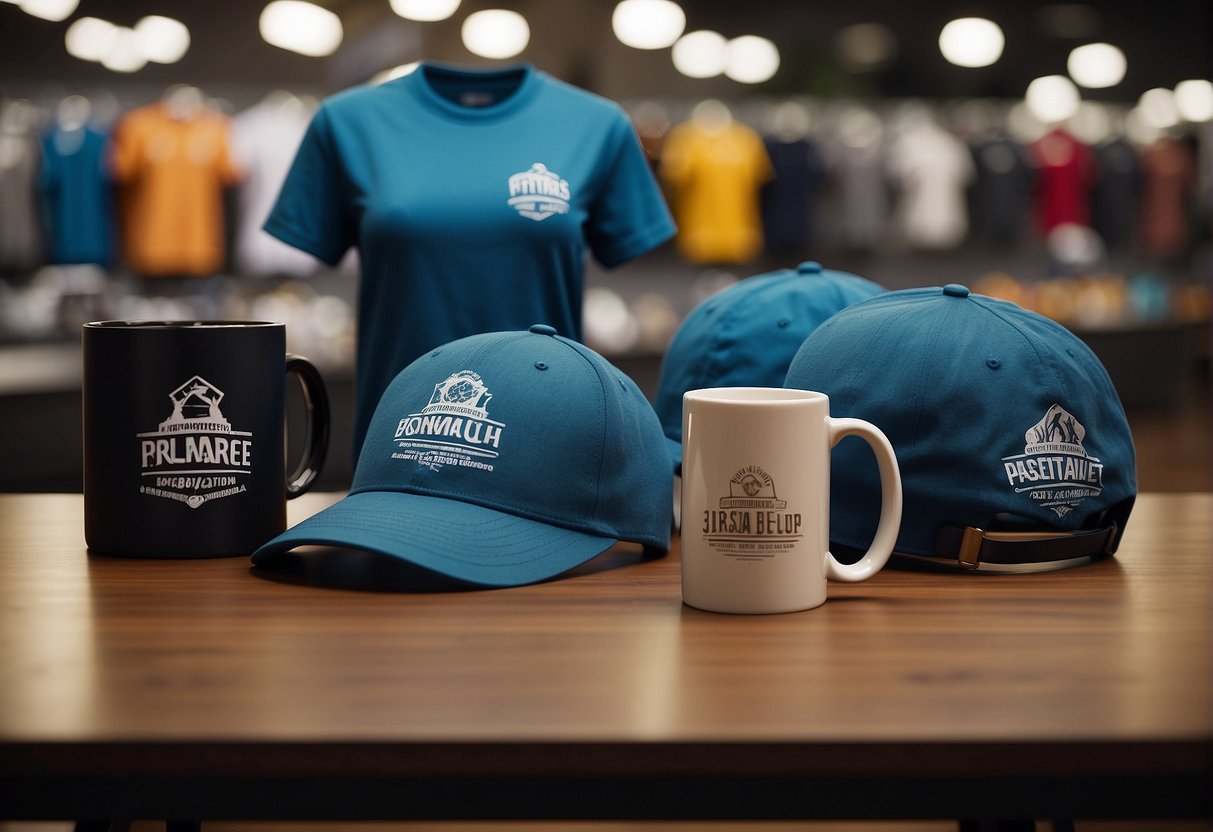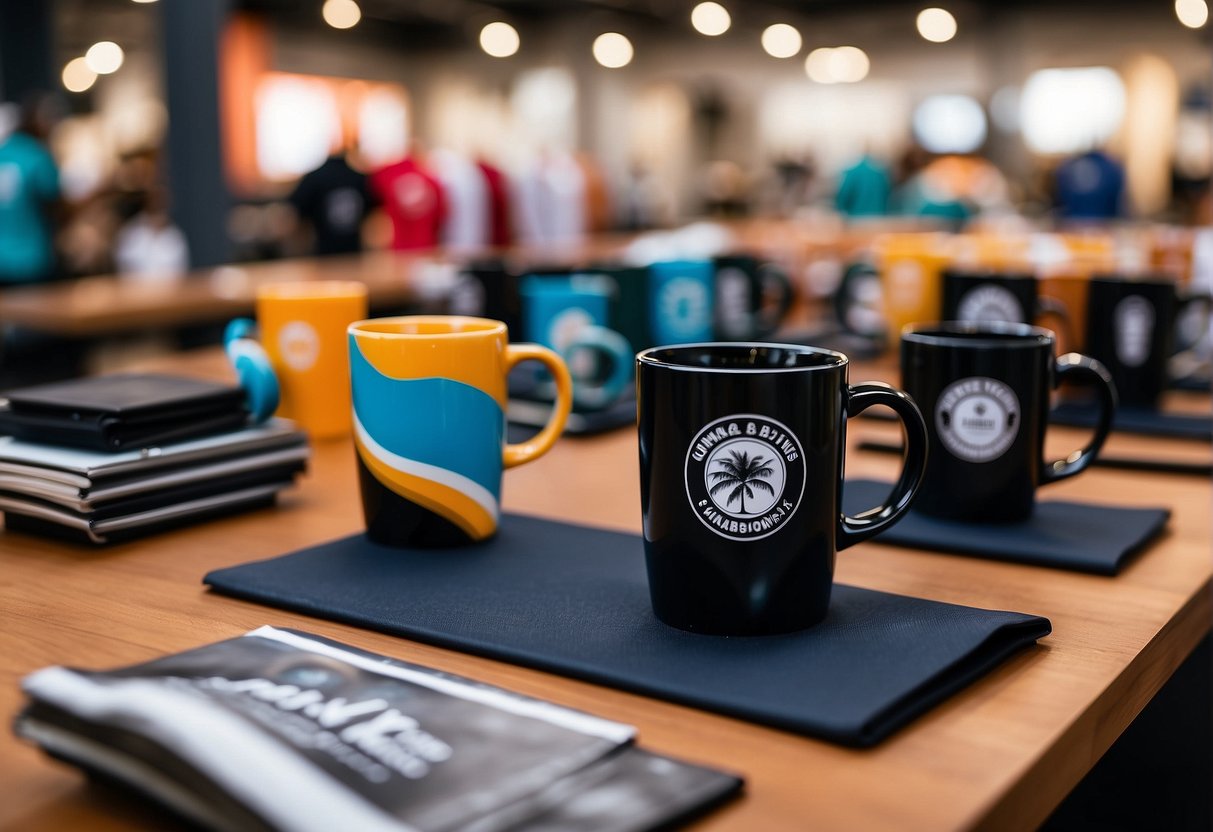In today’s competitive market, savvy businesses understand the power of effective marketing swag to boost brand awareness and build customer loyalty. When you carefully select promotional items, they become more than just giveaways; they transform into practical tools that carry your brand into your customers’ daily lives.
As you explore company swag ideas, consider products that align with your brand values and appeal to your target audience’s interests. High-quality, innovative, and useful swag can make a profound impact, turning potential customers into brand ambassadors who carry your message far and wide. Whether it’s wearables, tech gadgets, or eco-friendly items, the right swag resonates with your audience and reinforces your company’s image.
Remember, the ultimate goal of company swag is to create a tangible connection between your brand and your audience. Every item should serve a purpose, whether it’s to introduce new customers to your business or to thank long-standing clients for their loyalty. With a strategic approach to marketing swag, you have the potential to significantly amplify your brand presence and leave a lasting impression.
Understanding Swag and Its Role in Marketing
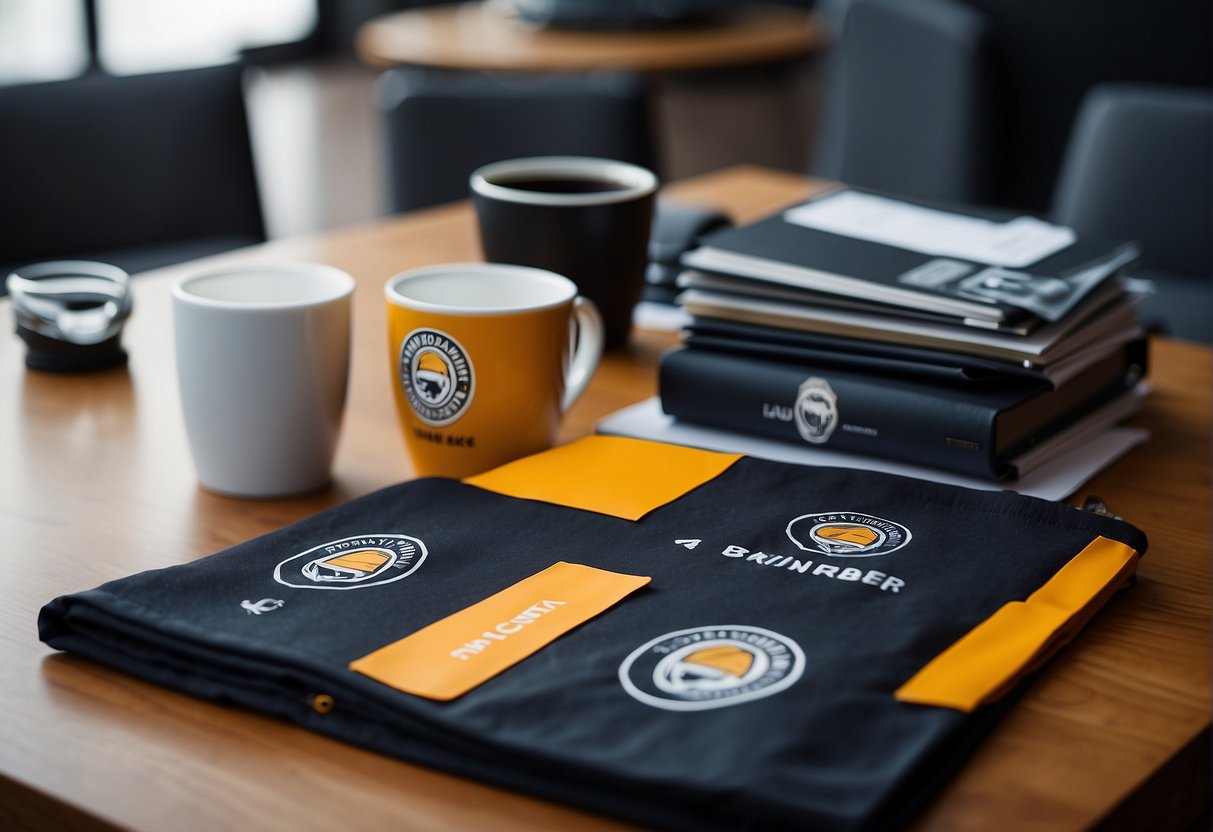
In the realm of marketing, swag is more than just free stuff—it’s a powerful tool designed to increase your brand awareness and foster loyalty among customers. Let’s explore the specifics of what swag is and how it can work for you.
Defining Swag and Its Purpose
Swag, a term often synonymous with promotional products, encompasses a variety of items such as pens, mugs, t-shirts, and more, all branded with a company’s logo or message. The purpose of swag is twofold. Firstly, it serves as a marketing tool, functioning as a physical reminder of a brand’s presence in your everyday life. Secondly, it’s crafted to provide value—either functional or aesthetic—to ensure you keep and use it regularly, keeping the brand top of mind.
The Impact of Swag on Brand Awareness and Loyalty
A strategic selection of swag can significantly boost brand awareness. For instance, wearable items amplify visibility each time they are used in public, turning recipients into brand ambassadors. Furthermore, the right swag fosters customer loyalty—you’re more likely to do business again with a company that has provided you with useful swag. This repeat engagement reinforces a positive brand perception, deepening the connection between you and the brand, which is the essence of brand loyalty.
By understanding the role of swag in marketing, you can effectively leverage these promotional items to benefit your brand’s growth and foster lasting relationships with your customers.
Selecting the Right Swag Items
Choosing the right promotional items for your company is crucial for reinforcing your brand’s image and values. Quality, value, and alignment with your company’s culture are pivotal.
Assessing Quality and Value
When selecting swag items, prioritize quality over quantity. Your promotional items should reflect the high standards of your products or services. To assess an item’s quality, consider its durability and usability. You’ll want to ensure that the swag won’t easily break or wear out, as this could negatively impact your brand’s perception. Additionally, the value it brings to your recipients plays a fundamental role. Items with practical everyday use, such as reusable water bottles or high-quality tote bags, can serve as constant reminders of your brand.
Value doesn’t necessarily mean expensive; it’s about finding a balance between cost and usability. Assessing the cost-to-utility ratio will help you choose swag that’s both beneficial to the recipient and cost-effective for you. Select items that they’ll want to keep and use, enhancing continuous brand exposure.
Aligning Swag with Company Values and Culture
Your swag should be a direct reflection of your company values and culture. If sustainability is a core value, opt for eco-friendly swag that showcases your commitment to the environment. For instance, products made from recycled materials or those that promote zero-waste lifestyles can resonate well with your audience.
Moreover, the swag should complement aspects of your company culture. If innovation is what you’re known for, then cutting-edge tech accessories could be the right fit. Remember, promotional items are not just gifts; they’re a statement about what your company stands for. Items that align with your core values not only serve practical purposes but also deepen the recipients’ emotional connection to your brand.
Swag Types and Ideas
When choosing swag for your marketing initiatives, selecting the right type of items that resonate with your audience is essential. Here are specific swag types and ideas that can effectively represent your brand and delight your recipient.
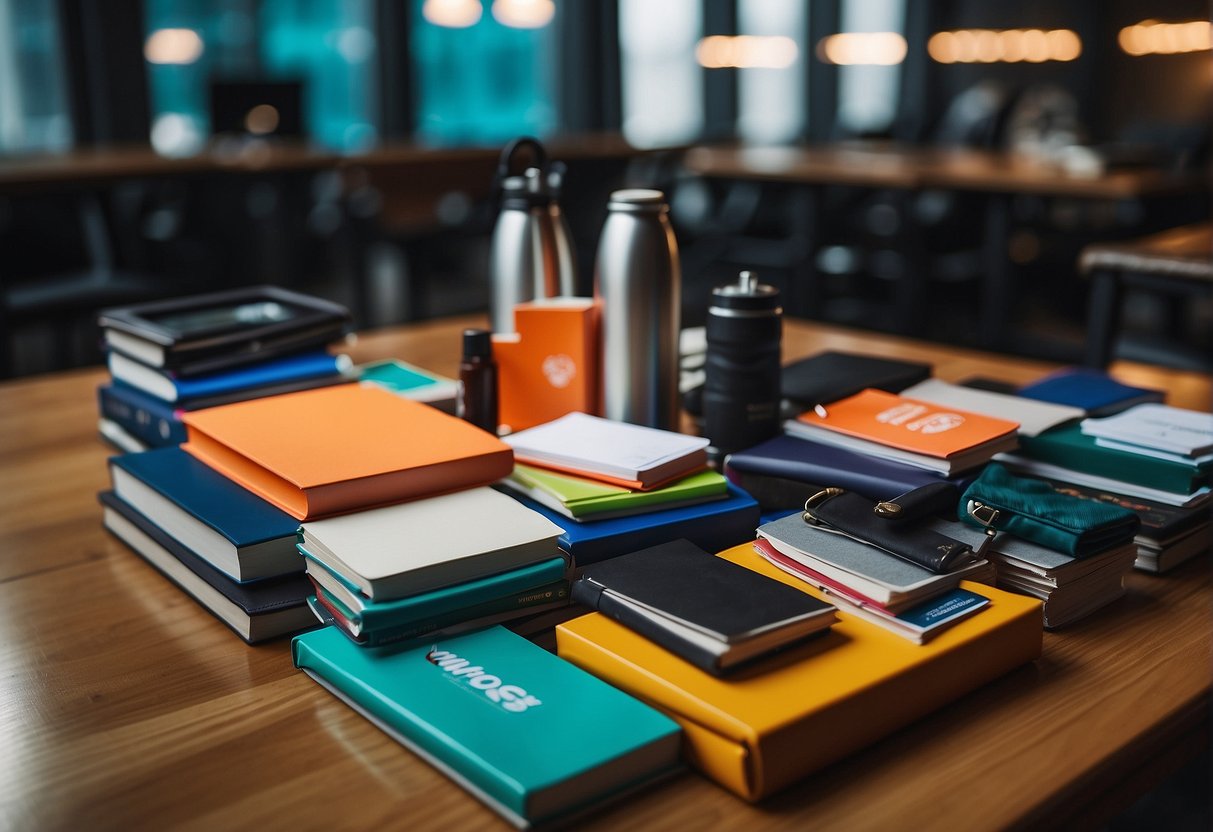
Apparel and Wearables
You can never go wrong with t-shirts and hoodies; they are walking billboards for your brand. For a more professional look, consider embroidering your logo on hats or socks to pair comfort with style.
Drinkware and Reusable Items
Drinkware, such as water bottles and coffee mugs, are practical items that recipients use daily, offering consistent brand exposure. Stainless steel water bottles are both a durable and eco-friendly option your audience will appreciate.
Office and Work from Home Essentials
In the era of remote work, work from home essentials like branded notebooks and pens are a staple. Additionally, consider a branded tote bag, perfect for displacing the notion of ‘all work and no play’.
Tech Gadgets and Accessories
Power banks and USB drives are functional tech accessories that have become indispensable, especially when you’re on the move. They’re perfect for the tech-savvy user who values staying charged and connected.
Unique and Eco-Friendly Options
For the environmentally conscious, offer eco-friendly swag such as biodegradable pens or recycled notebooks. Custom swag with a sustainable message can position your brand as socially responsible.
Designing Effective Swag
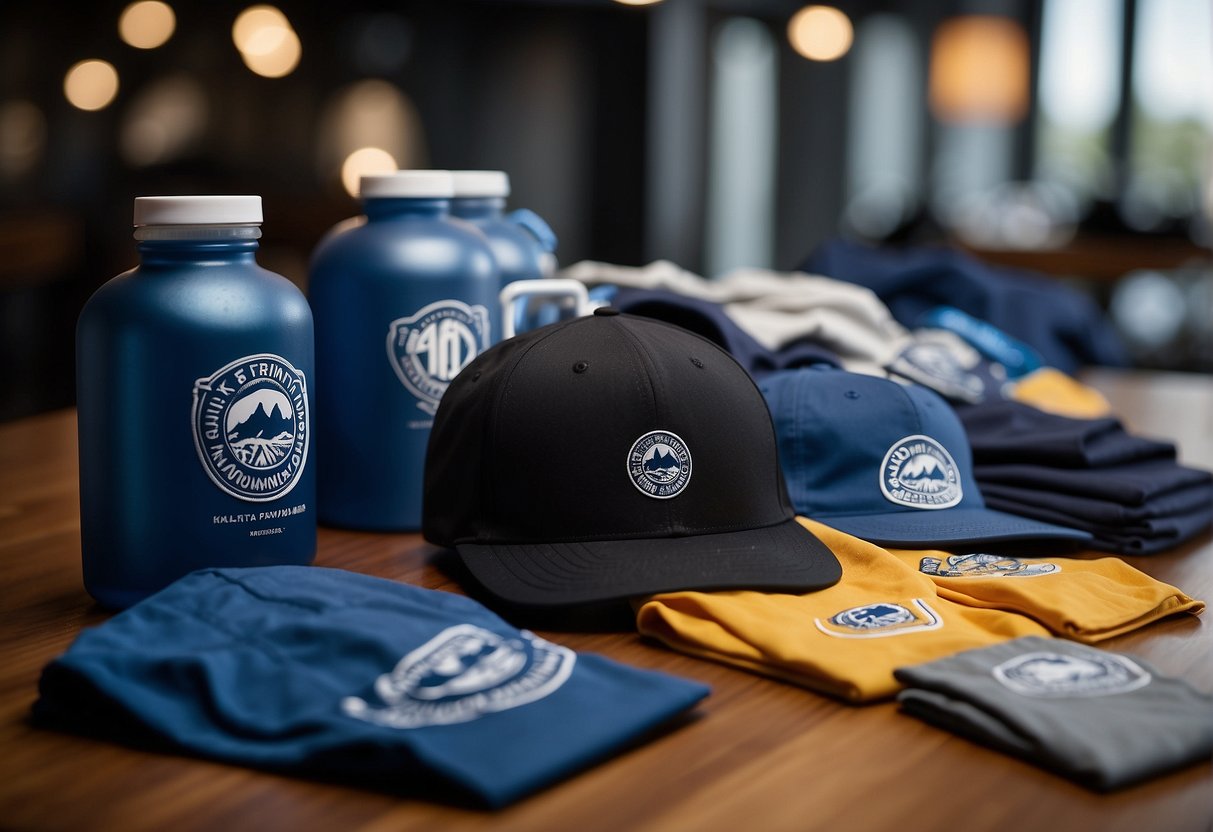
When you’re crafting swag for your marketing efforts, the design is crucial for making a lasting impression. Your swag should not only be appealing but also communicate your brand’s identity effectively.
Creative and Memorable Design
Your swag should stand out in a crowd. It’s about making items that grab attention and remain in people’s minds long after an event. Consider the functional value and visual appeal of the products you choose. For instance, a USB drive shaped like your product or a notebook with a unique texture can make a significant impact. Here’s a way to think about design elements:
- Functionality: Choose items that people will use often, increasing brand visibility.
- Color Palette: Align with your brand colors but don’t be afraid to add a complementary pop of color for vibrancy.
- Text: Keep it legible; the typeface should be easy to read from a distance.
Integrating Corporate Branding
Incorporating your company logo into swag isn’t just about slapping it onto products. It’s how your logo is presented that can make a difference. Size and placement are key; your logo should be visible but not overpowering. Think of ways your logo can naturally fit into the item, like an elegant deboss on a leather notebook or a subtle watermark on a scarf. Here’s a concise strategy for branding:
- Consistency is Key: Make sure your logo looks the same across all swag to solidify brand recognition.
- Adaptability: Your logo should be adaptable to different swag items’ sizes and shapes while retaining its integrity.
- Quality Printing: Invest in high-quality printing or embroidery to ensure your logo withstands wear and tear.
By carefully considering the design and integration of your corporate branding, your branded swag will not just be another item, but a piece of marketing that continues to build brand recognition for your company.
Production and Customization Processes
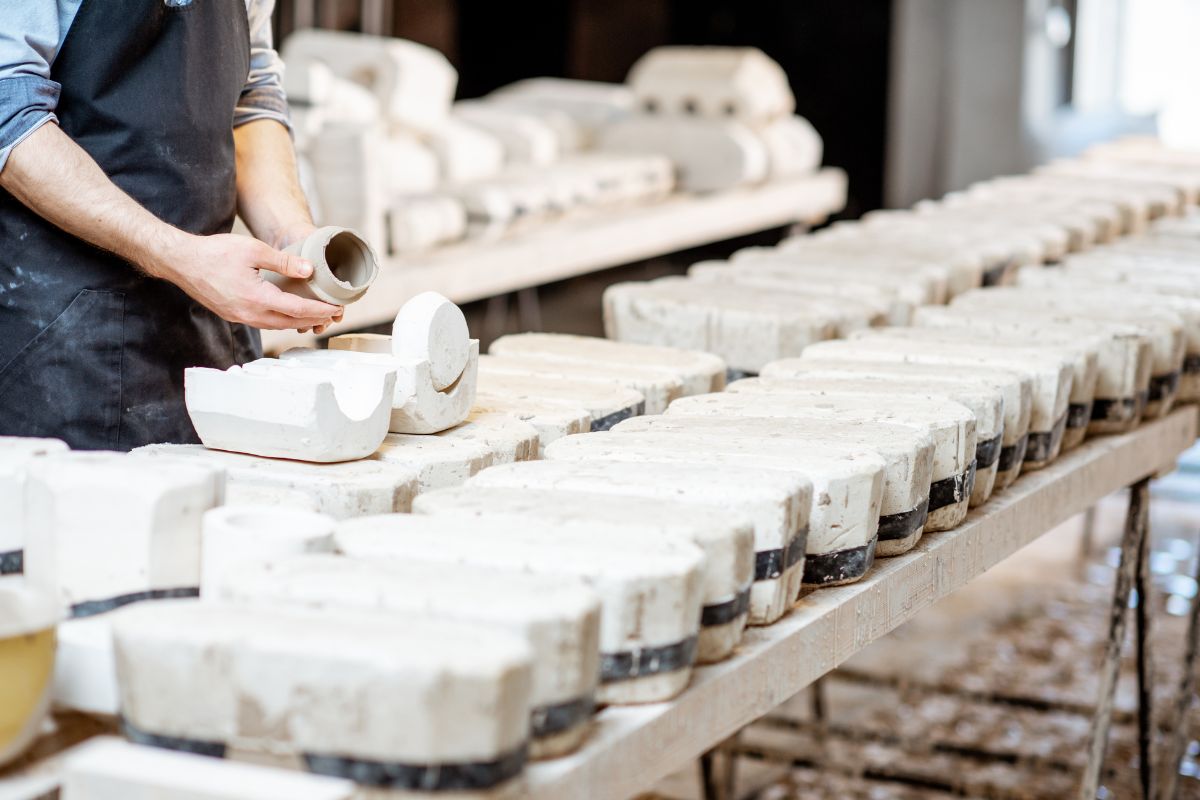
When you’re developing marketing swag, it’s crucial to understand the production and customization processes that will transform your basic items into branded gems. Focusing on best practices for printing and manufacturing can save you time and costs, while the right customization techniques can turn a simple notebook or mug into a memorable gift.
Printing and Manufacturing Best Practices
Printing plays a significant role in branding your swag. For notebooks, ensure the clarity of your logo by opting for silkscreen printing or debossing for a tactile feel. With stickers, digital printing offers vibrant color options and precision cuts. Choose the correct ink types and printing resolutions — high-quality, fade-resistant inks are critical for items like mugs, which will undergo regular washing.
For manufacturing, consistency is key. Whether you’re producing a small batch of executive pens or a large order of tote bags, maintaining a uniform quality across the board is what makes your swag stand out.
- Checklist for Printing and Manufacturing Quality:
- Confirm ink quality and durability.
- Validate print resolution for clarity.
- Use prototype or sample runs before full production.
- Inspect the first production line items meticulously.
- Ensure all printing complies with your branding guidelines.
Customization Techniques for Various Swag Items
When customizing swag, each item requires a different approach. For notebooks, consider embossing for an upscale look, or use full-color wraps for a bold statement. Stickers should highlight your brand’s colors and logos crisply and should stick to surfaces properly without leaving residue when removed.
For items like mugs, sublimation printing allows for a full-color, wrap-around design, giving you more space to showcase your brand or message. It’s important to choose the customization technique that aligns with the item’s material and usage:
- Customization Methods:
- Notebooks: Embossing, debossing, silkscreen printing
- Stickers: Digital printing, die-cutting for custom shapes
- Mugs: Sublimation, ceramic printing (for durability)
In every customization process, you should keep your brand’s essence intact while ensuring the usability of the item isn’t compromised. Remember that the ultimate goal is to create something that integrates your brand into your audience’s daily life, making it both a functional item and a marketing tool.
Swag Distribution Strategies
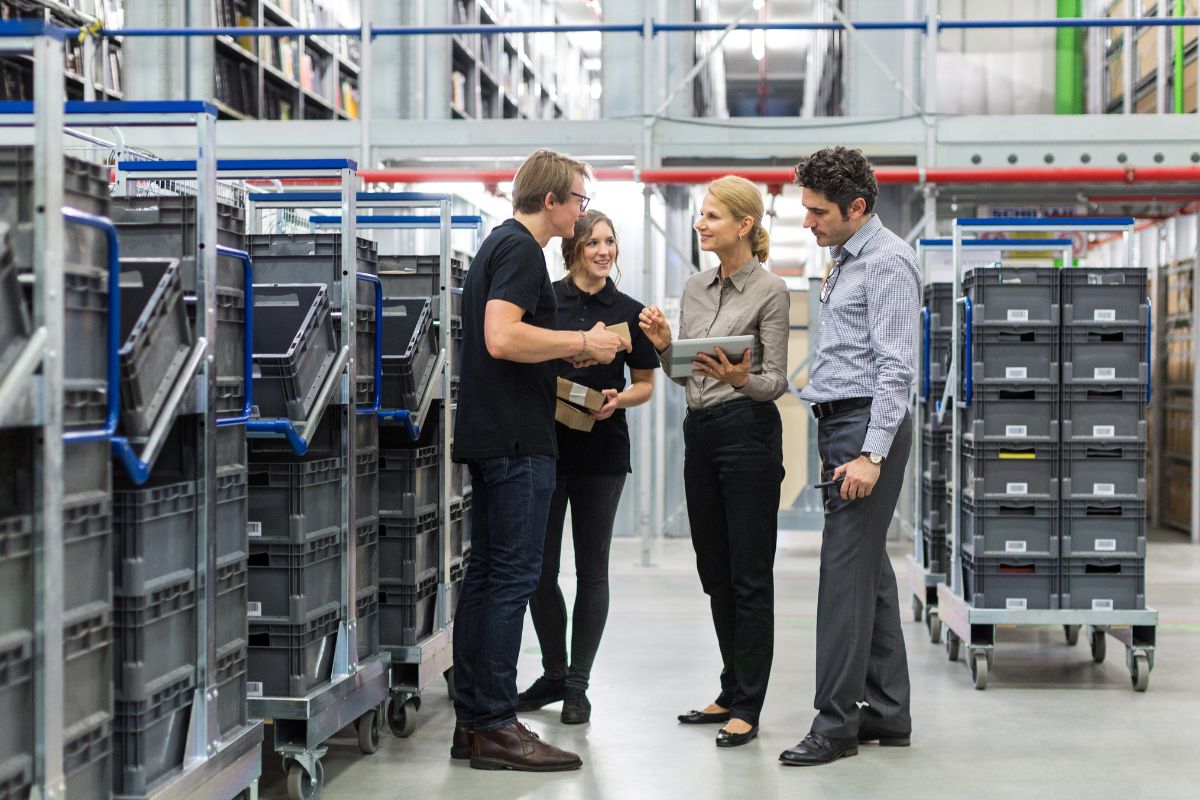
Effective distribution of promotional merchandise, or swag, can significantly enhance your brand’s visibility and create memorable touchpoints with your audience. By tailoring strategies to specific contexts like events and integrating them within your broader sales and marketing initiatives, you can maximize the impact of your swag.
Leveraging Events and Trade Shows
Events and trade shows present prime opportunities for distributing swag that aligns with your brand. When attending these gatherings:
- Select Relevant Swag: Choose items that resonate with the theme of the event and are useful to attendees. For example, tech accessories for a tech expo.
- Simplify Distribution: Set up a dedicated booth or space for swag distribution to streamline the process and encourage visitor engagement.
Attending trade shows or industry events is an opportunity to offer swag that keeps your brand on peoples’ minds long after the event ends.
Incorporating Swag into Sales and Marketing Efforts
Integrate swag into your sales and marketing tactics to foster stronger relationships with clients and prospects:
- Align with Campaigns: Deploy swag in tandem with marketing campaigns to reinforce your message and increase brand recall.
- Personalize: Offer personalized items as part of your sales funnel, making recipients feel valued and enhancing the perception of your brand.
By considering swag a tangible extension of your sales strategy, you open up another channel to build connections with your targets.
Maximizing Engagement with Swag
Effective swag does more than just act as a physical reminder of your brand; it engages your audience and fosters relationships. By curating strategic swag items, you integrate your brand into clients’ and employees’ lives.
Engagement through Giveaways and Contests
You magnify your brand’s reach when you integrate giveaways and contests into your marketing strategy. These activities not only provide excitement but also encourage participants to actively engage with your brand. Consider the following aspects to maximize engagement:
- Reach: Execute online campaigns where participants can win swag for sharing your content, increasing visibility and customer loyalty.
- Interaction: Design contests that prompt users to create content or share stories in exchange for swag, fostering a deeper connection.
Building Relationships with Clients and Employees Through Swag
Your choice in swag should strengthen the bond with your clients and employees. Here are pragmatic ways to reinforce these relationships:
- Personalization: Tailor swag items to reflect their recipients’ interests or roles, making them feel valued.
- Utility: Select items that are practical and can be used frequently, keeping your brand top of mind.
By investing in meaningful swag, you demonstrate appreciation for your clients and commitment to your employees, fostering enduring partnerships and boosting engagement.
Measuring the Effectiveness of Swag
When investing in marketing swag, you need to assess whether the items you’re giving away are actually contributing to your business goals. It’s not just about the attractiveness of the gifts but how they translate into real-world benefits for your company.
Understanding ROI and Impact on Business Goals
Return on Investment (ROI) is the compass that should guide your swag strategy. To accurately gauge the ROI of your promotional items, start by tying each swag initiative to a specific business goal. This could be increasing brand awareness, boosting sales, enhancing customer loyalty, or even improving employee productivity.
- Sales Leads: Track how many leads are generated from swag distribution at events or conferences. You might do this by including a unique offer code on your swag items that customers can use when making a purchase.
- Customer Engagement: Monitor social media mentions or survey attendees post-event to see if there’s a buzz created by your swag. High engagement levels can be a positive sign of impact.
- Employee Productivity: If swag is for internal use, assess if there’s been an uplift in employee morale or productivity. Happy employees can have a ripple effect on customer satisfaction and sales.
To understand impact, look at both quantitative and qualitative data. Quantitative data gives you hard numbers to work with, such as an increase in website traffic after a swag giveaway. Qualitative feedback, on the other hand, can convey the sentiment and attitudes of the receivers towards your brand.
Remember, the most effective swag is the one that your audience finds valuable and aligns with your marketing objectives. By measuring the effectiveness of swag in dollar terms and its impacts on various aspects of your business, you will be in a stronger position to make informed decisions about future promotional investments.
Maintaining Relevance in Swag Choices
Making the right swag choices involves keeping a close eye on evolving market trends and understanding your clients’ preferences. By doing this, you ensure that the promotional items you provide not only resonate with your audience but also stay in line with the current marketing landscape.
Adapting Swag to Market Trends and Client Preferences
Market Trends:
- Stay informed on the latest product innovations and ecological materials as sustainability becomes a growing concern.
- Observe social media for viral products or styles; integrating these can make swag instantly recognizable and trendy.
Client Preferences:
- Collect feedback through surveys or comment sections on social media platforms to gauge interests or disappointment in past swag items.
- Tailor product selections to align with the values and brand identity of your clients; this demonstrates attentiveness and fosters client loyalty.
Swag Management and Logistic Considerations
Effective swag management and logistics are essential for maintaining your company’s promotional momentum. Getting your marketing materials into the right hands at the right time requires a strategic approach to inventory control and distribution networks.
Inventory and Distribution Management
To ensure your company swag store operates smoothly, it’s critical to implement robust inventory management systems. Keep track of stock levels in real-time to avoid overordering or running out of popular items. Utilize software that offers inventory alerts and detailed analytics on item performance.
When planning distribution, choose a logistics partner who understands the importance of timely delivery, particularly for event-driven handouts. Develop a distribution strategy that aligns with your marketing events to guarantee that swag items reach their destinations ahead of schedule.
| Consideration | Description |
| Storage | Safe and accessible storage for inventory is a must. |
| Tracking | Use serial numbers or RFID tags to monitor stock movement. |
| Forecasting | Analyze past swag usage to predict future needs. |
| Shipping | Partner with reliable carriers for efficient swag delivery. |
Your swag distribution method should be as dynamic as your marketing plan. Whether you’re shipping directly to clients, delivering to events, or stocking up your company store, each channel needs a tailored logistical solution. Always keep quality control and cost-effectiveness at the forefront of your swag management strategy.
Legal and Ethical Considerations of Swag
In your marketing strategies, it’s imperative to consider the legal and ethical implications of distributing swag. These considerations ensure your promotional efforts align with regulations and uphold high ethical standards.
Compliance and Regulatory Aspects
When you create marketing swag for your brand, you have a responsibility to ensure that your items comply with all applicable laws and regulations. This often includes, but is not limited to, safety standards, environmental regulations, and labor laws.
- Safety Standards: Your swag items should meet safety standards to prevent harm to recipients and avoid liability. For example, if you distribute electronic gadgets, they must be certified for safe use.
- Environmental Regulations: Consider the environmental impact of your swag. Items should be produced with sustainable materials, and you should avoid materials that are banned or frowned upon due to environmental regulations.
- Labor Laws: You must ensure that the factories where your swag is produced adhere to international and local labor laws. This includes fair labor practices and no child or forced labor.
Being knowledgeable about these aspects helps you maintain a respectable reputation and avoid costly legal pitfalls. Remember to conduct thorough due diligence on your suppliers to ensure adherence to these critical areas. Compliance is not just a legal matter but also a reflection of your company’s values and commitment to social responsibility.
Case Studies and Success Stories
In the realm of marketing, swag can often be the unsung hero that boosts brand visibility and customer loyalty. Here, you’ll explore real-world examples where promotional items were key players in a company’s marketing strategy success.
Examples of Impactful Swag Campaigns
- Attenex: Using swag cleverly, Attenex not only delighted users but also integrated their products into the user experience. Their case study shows a strategic use of product-themed items that engaged and retained their customer base.
- Marketing Differentiation Strategy: An effective swag campaign can stem from a company’s ability to differentiate itself. There are instances where providing creative and unexpected promotional items played a pivotal role in setting a business apart from its competitors.
Your unique marketing swag can serve as a long-lasting reminder of your brand, making it an indispensable part of your marketing arsenal. The campaigns showcased are just a snippet of how you can harness the power of promotional products to elevate your marketing efforts.
Conclusion
When choosing marketing swag, remember it’s a reflection of your brand’s trust and commitment to sustainability. Items that align with eco-friendly values resonate well, as seen in University of British Columbia’s analysis of sustainable swag. Opt for products that offer utility and echo a message of appreciation for your audience.
Develop recognition by selecting swag that encourages shared experiences or memorable moments connected to your brand. As you integrate these products into your marketing strategy, they serve not just as gifts, but as tools that enhance customer loyalty and serve as conversation starters.
In managing your swag choices, it’s also imperative to consider the preferences of your targeted demographics. For instance, when aiming at millennials, adaptability is key; they value personalized and meaningful products, thus your swag should reflect this understanding.
Invest in marketing swag that embodies quality and trust, fosters a sense of appreciation, and serves as a platform for brand recognition. These elements will ensure that your promotional items are not just well-received, but that they also reinforce your brand message with integrity and purpose.
Additional Resources
When you’re planning your marketing swag, it’s important to have a variety of resources at your disposal. Here’s a concise list to assist you in your venture:
- Idea Generation: Stay updated with the latest trends by frequently visiting marketing forums and attending industry trade shows. Additionally, platforms like Pinterest can offer a plethora of creative swag ideas.
Examples:- Marketing forums: Warrior Forum, MarketingProfs
- Trade shows: CES, Promotional Product Trade Show Directory
- Vendors and Suppliers: Establish connections with a range of suppliers to find unique items that align with your brand. Consider suppliers who offer customization and can suggest items that might not be readily available elsewhere.
Suggestions:- Promotional items: Swagify
- Custom merchandise: Vistaprint
- Design Resources: Use online design tools and software to create mock-ups of your swag before production. Engaging with a professional designer can also ensure your brand’s integrity is maintained.
Tools:- Free design software: Canva
- Designer platforms: Behance
- Feedback Mechanisms: Before finalizing your swag selection, use surveys or focus groups to gauge interest and effectiveness. This feedback can help refine your choices.
Platforms:- Survey tools: SurveyMonkey
- Online focus groups: User Interviews
By utilizing these additional resources, you’ll be better equipped to select marketing swag that resonates with your audience and enhances your brand’s visibility. Remember to tailor your choices to your specific marketing goals and the interests of your target audience.
Frequently Asked Questions
In this section, you’ll find targeted answers to common queries around marketing swag, focusing on current trends, generational preferences, and strategic selection to enhance your brand’s presence.
What are some creative high-end swag items for corporate gifting?
Consider luxury items that blend functionality with a wow factor, such as high-quality noise-cancelling headphones or custom leather goods. These items reflect a sense of sophistication and attention to recipient preferences.
How can companies tailor their swag to appeal to Gen Z employees?
To connect with Gen Z, integrate tech-savvy and sustainable items like solar power banks or reusable smart notebooks. These items demonstrate your company’s forward-thinking and eco-conscious values.
What trends are guiding the selection of popular swag items for 2023?
This year, expect to see a push toward customization and personalization, allowing recipients to feel a unique connection to the brand. Also, eco-friendly products are on the rise, making branding synonymous with sustainability.
What types of swag are most effective for sales kickoff (SKO) events?
Focus on items that promote team spirit and unity, like branded apparel or motivational desk accessories. Items that can be used immediately during the event, such as high-quality notepads and pens, can also enhance the experience.
How can unique marketing swag improve brand visibility and engagement?
Distinctive swag items that align with your brand’s image or values can turn recipients into brand ambassadors. Unique items create conversation points and foster a deeper connection with the brand.
What strategies can businesses use to select swag items that resonate with their brand and employees?
Assess your company culture and the overall message you want to convey. Select items that are not only practical but also tell a story about your company’s mission and vision, thus ensuring the swag embodies your brand identity.

